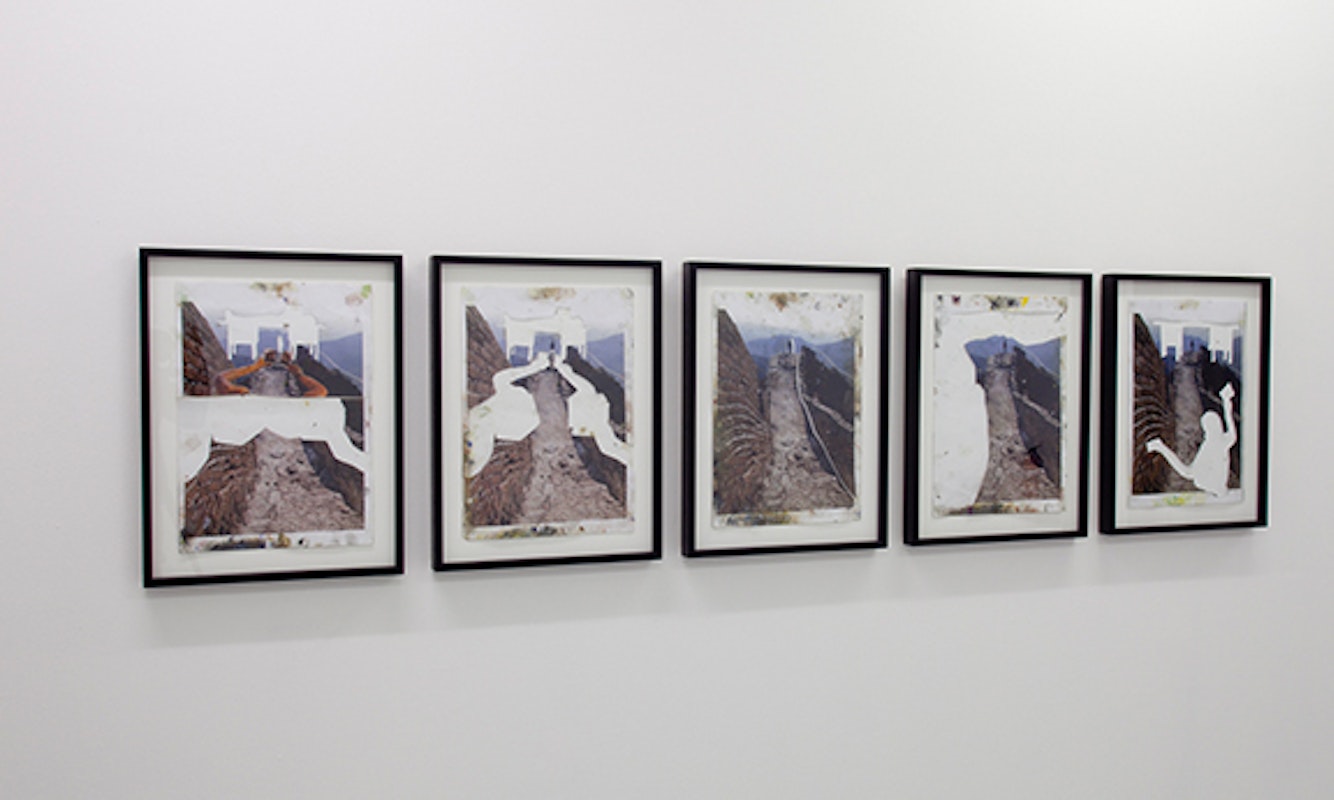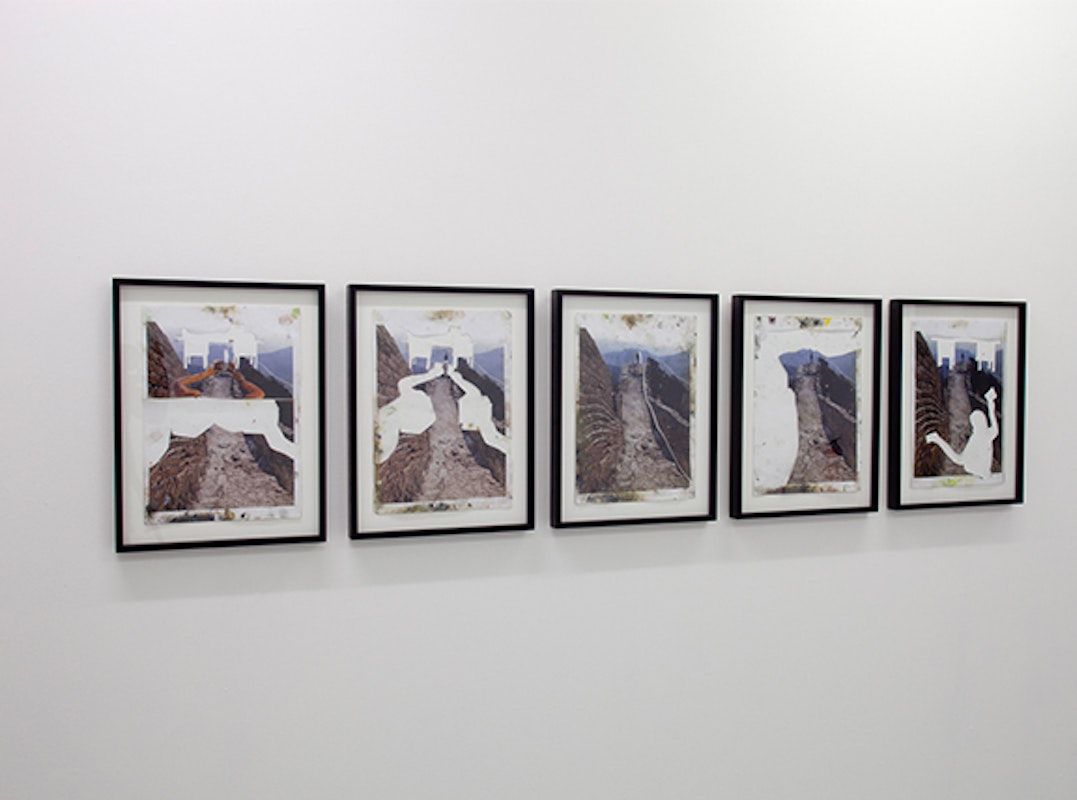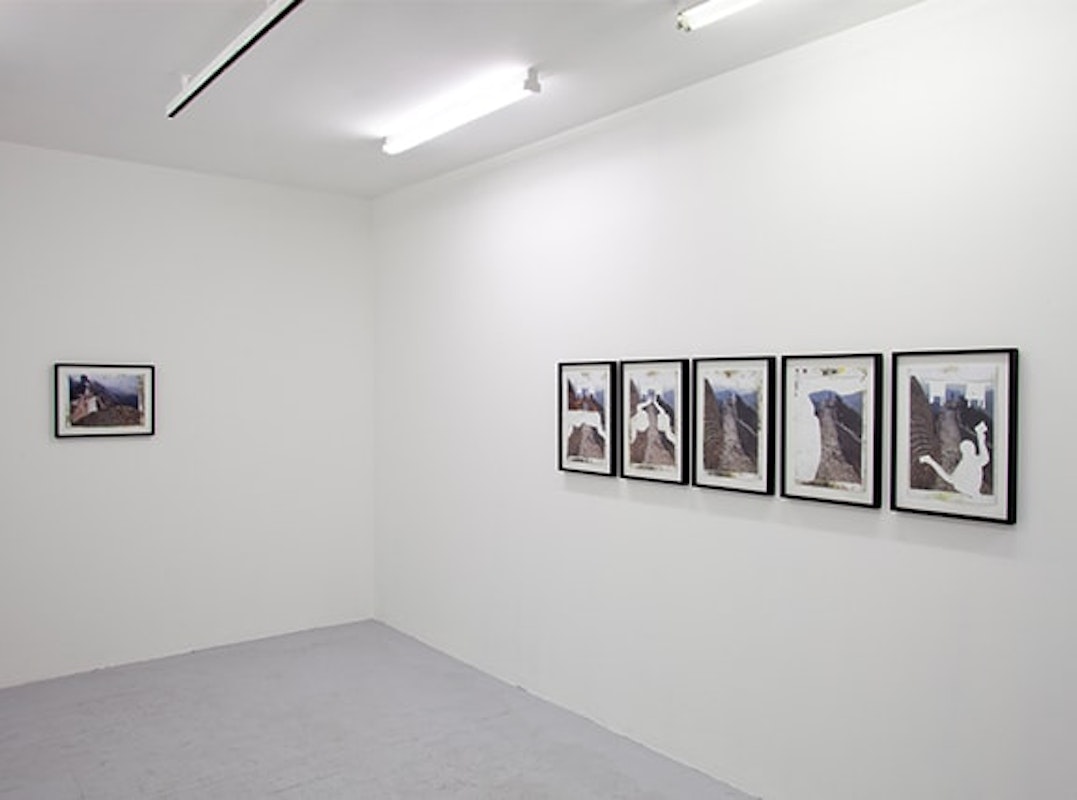
4 September -
30 September 2010
Studio 12
200 Gertrude Street, FitzroyCatalog text produced for Gertrude Contemporary and Art and Australia Emerging Writers Program -
Moya McKenna’s practice is engaged very directly with the idea of the art ‘object’. This concern applies
not only to the finished, ‘unique’ artwork, but also to her treatment of the multitude of objects and images that constitute her pieces. The process of artistic creation is evident in McKenna’s output, primarily in painting but across other media too. Employing a traditional, studio-based practice, McKenna not only uses her tools to create her artworks, she often makes these tools the subject of her pieces. She has even gone so far as to photograph herself as an inanimate object, lying flat and outstretched, almost as if she is about to be operated on or manipulated in some way. Such an image speaks to a subtle performativity, and much of McKenna’s practice reveals an interesting commentary on the conflicting ability of the visual arts to objectify subjects, but also to re-animate inert or forgotten subjects and stories.
Previous bodies of McKenna’s work have been described as contemporary takes on the tradition of still life painting. Rather than compose an orderly arrangement of objects, McKenna creates complex assemblages of props and items in her studio, then renders these sculptural creations in oil on linen and canvas. As opposed to the precise realism of still life, McKenna’s technique is strong, bold and gestural. McKenna prefers to work wet, often completing her canvases in a single sitting, not regularly adding to them or altering them afterwards. The visibility of the painter’s strokes reinforces the sense that the painting offers an interpretation, not a translation of the original objects.
McKenna’s recent body of work, Sowing parts for uncertain meetings (2010) continues this working fascination, using a different yet related form of assemblage as the starting point for her creative process. Rather than creating groupings of objects to work from, McKenna has turned her attention to collage and paper cutting. Collage is often a very precise and delicate art, with the ability to immediately bring distinct and diverse imagery into conversation, although not always into a spatial relationship. One of the pleasures of collage is the visibility of the actual paper cut, a tangible boundary and pause in rhythm, which lends a subtle sense of texture and depth. While this element of the technique is lost through McKenna’s transference into paint, the final artworks both acknowledge and challenge their origins. The form of the collage is still very much observable in these paintings, yet its perspective and composition are transformed. The fragmented and juxtaposed imagery, the distinct planes of colour and content, the familiarity of images drawn from recognisable sources, and the tricks of perspective all hint to the origins of the composition. The act of cutting something out of paper inherently creates a void, of that which once belonged but has been snipped away. By interpreting her rough collages as paintings, McKenna fills these voids and creates new ruptures. With strong brushstrokes and bold colours, her paintings tunnel the viewers’ sight to particular areas of the canvas. By incorporating a recurring photograph from the artist’s recent trip to the Great Wall of China, the paintings assume a sense of landscape-like scale.
The photographic image of the wall, the bridge or the path extending to the horizon also provides an entry (and exit) point for the moving image works that McKenna produces, and her Studio 12 exhibition reveals her ongoing interest and experimentation in the medium. Considering her attention to the materiality and tactile nature of the art studio and its objects, it is perhaps not surprising that McKenna is drawn to stop-motion animation. Using grainy Super 8 film, McKenna’s object ‘muses’—mannequin heads, arms, pieces of fabric—are not so much ‘brought to life’ as they are given further form, movement, temporality and spatial presence through the slow and composed animations. Shot within the studio, they further code the artist’s physical environs as a stage for events and creative outbreaks. These moving image pieces further highlight an important element observed in much of McKenna’s practice, the Uncanny object, or that which is ‘not quite what it seems’. Across her creative practice, there remains a strong sense that viewers must ask themselves, ‘What am I looking at? What am I seeing? What am I really seeing?’. For although many of McKenna’s images, objects and animated scenarios resemble something very particular, their precise nature is often obscured and transformed, difficult to pin down, yet enticingly evocative and poetic.
Moya McKenna: Studio Artist 2009 - 2010. To view her page click here.

